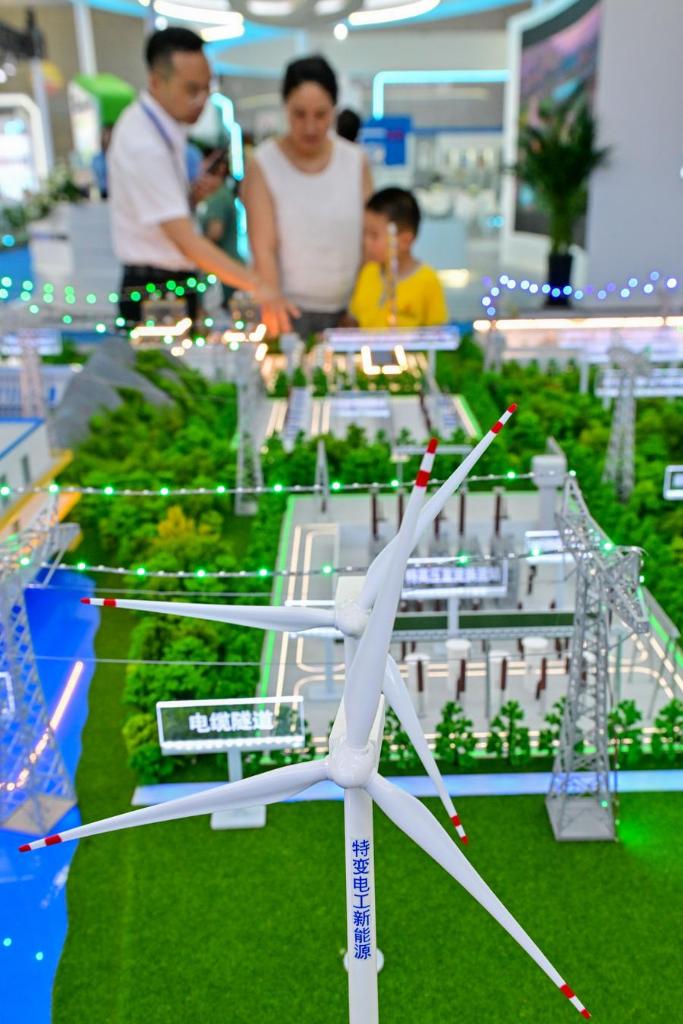Promising prospects for China-Central Asia green energy cooperation

Visitors learn about power facility models at the 8th China-Eurasia Expo in Urumqi, northwest China's Xinjiang Uygur Autonomous Region, June 27, 2024. [Xinhua/Ding Lei]
URUMQI -- Green energy cooperation between China and Central Asian countries has become closer in recent years, which has led to the completion of a number of projects.
At the eighth China-Eurasia Expo in Urumqi, capital of northwest China's Xinjiang Uygur Autonomous Region, Goldwind Sci & Tech Co., Ltd. displayed its latest wind power products, which are suitable for the geographical environment of Central Asia.
"Xinjiang and Central Asia are connected by mountains and rivers, and Central Asia has become one of Goldwind's core markets," said Gao Jinshan, vice president of Goldwind. He noted that by the end of the first quarter of 2024, Goldwind had accumulated more than 319,000 kilowatts of wind power installed capacity in Kazakhstan, Uzbekistan and other Central Asian countries.
"In the future, we plan to invest and build factories in Kazakhstan and Uzbekistan to achieve local manufacturing of wind turbines," he added.
In recent years, more and more Chinese enterprises have invested in the new energy industry in Central Asia. Across Kazakhstan, wind farms, hydropower stations and photovoltaic power stations built in collaboration with Chinese companies have effectively helped with the local transition to low-carbon production.
At the expo, Chinese enterprises such as CHN Energy and China Huadian Group displayed power generation models and battery components that can adapt to different landforms. TBEA Co., Ltd. demonstrated its self-developed UHV transmission equipment, which can realize the large-scale long-distance transmission of green power.
China has held the top spot globally for several years in terms of installed capacity for hydropower, wind power, photovoltaic and nuclear power under construction. Renewable energy accounts for more than 50 percent of China's installed generating capacity. It is estimated that by the end of this year, the cumulative installed capacity of new energy in Xinjiang will exceed 89 million kilowatts, becoming the largest power source in Xinjiang.
Industry insiders believe that the high proportion of new energy connected to Xinjiang's power grid can provide a reference for the development of green energy in Central Asia, which has similar geographical conditions and climate to Xinjiang.
Central Asian countries are not only rich in traditional energy reserves, but also rich in renewable energy resources, with great potential for development, said Su Chang, a researcher with the Institute of Russian, Eastern European and Central Asian Studies at the Chinese Academy of Social Sciences.
Kundus Kyrbasheva, chairperson of the Association of Wind and Solar Power Plants of Kyrgyzstan, said Kyrgyzstan is promoting green and low-carbon energy transition, adding that China is one of Kyrgyzstan's main partners in modernizing its energy infrastructure.
At the China-Central Asia Summit held in May 2023, China reached a series of agreements on cooperation with the five Central Asian countries, including cooperation on green development and climate change.
Su said China has advantages in technology, management and production in solar energy, wind energy and hydropower, and is capable of helping Central Asian countries in their green transformation.
























